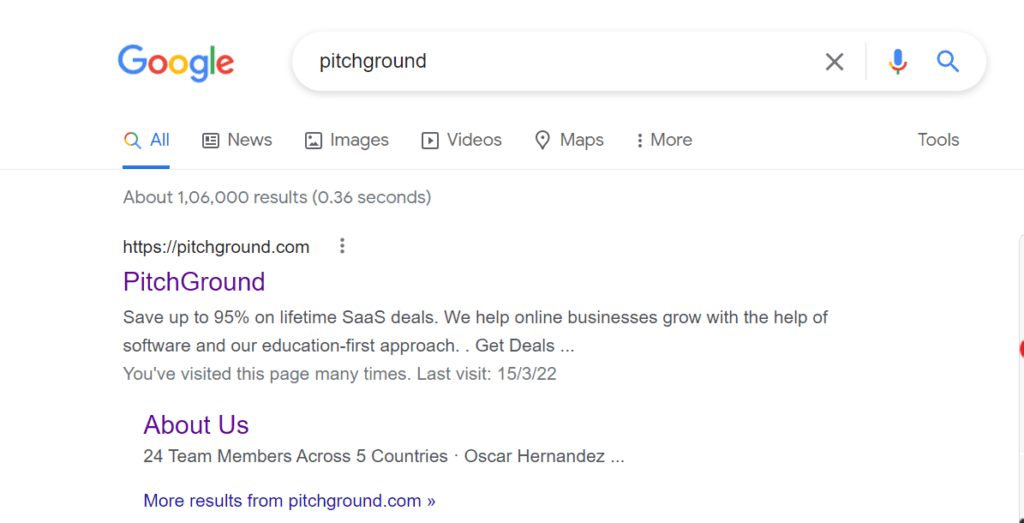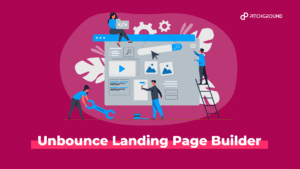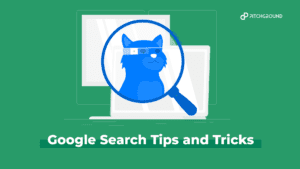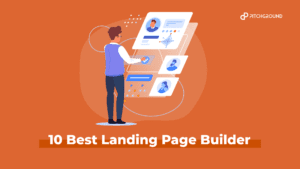Your meta description is just like a headline, only it appears in search results instead of the title.
Most websites use a catchy and informative meta description to attract readers. That’s good news for you since Google uses it to determine what shows up first when someone searches for your product or service.
A meta description isn’t necessary, but it can improve your rankings. So why not write something great?
Write a compelling description that tells visitors exactly what they will find on your site.
What is a meta description? Is it important? Should I write it or leave it blank?

Meta descriptions provide information about your webpage using HTML code. They appear at the bottom of search engine results pages (SERPs). In other words, they describe the page itself rather than its content.
It helps in the search query, as well as in user experience.
A meta description should be written in natural language. It cannot contain keywords, URLs, phone numbers, or links.
The meta description appears below the title in search results, so it is very important to get it right. If you don’t include a meta description, some search engines won’t display your site at all.
The length of your meta description doesn’t matter much. However, try to keep yours under 160 characters.
Some companies have also noted that the average reader will read about 150 characters before deciding whether to click through to the website.
It is also a great way to gain organic traffic and improve search rankings.
You may include meta descriptions inside image tags if you want, as long as each one has a separate alt attribute.
This is beneficial because image-only browsers, such as those used by mobile devices ignore images with empty alt attributes.
You always need to have a meta description set up on every web page, even if there is no text associated with an element.
When a user hovers over a link or image, there is still a chance they will see the text, which could influence their decision to click the link or visit the site.
Statistics
- Our on-site SEO study found that nearly 30% of the sites had duplicate meta descriptions, and 25% had pages with no meta description. (semrush.com)
- Within a page that you are optimizing, you should include your target topics & keywords while also ensuring the content is 100% unique and satisfies the user intent of the top queries you are trying to rank for. (semrush.com)
- In fact, according to a Moz analysis, only 35.9% of original meta description tags are displayed “as is” in Google search. (themeisle.com)
- In 15.4% of cases, Google used the original meta description tag but added some text. (themeisle.com)
- In 51.3% of cases, the display snippet perfectly matched the meta description tag or fully contained it. (themeisle.com)
- In 3.2% of cases, the display snippet used a truncated version of the meta description tag with an ellipsis on the end. (themeisle.com)
- Google used all or part of the original meta description tag in 55% of cases. (themeisle.com)
- A study by digital marketing agency Portent says Google rewrites meta descriptions 71% of the time in mobile search results and 68% on desktop. (shopify.com)
Why Should I Use Meta Descriptions?

There are many reasons why you should use meta descriptions:
1. Your Title Tag Isn’t Enough
When users search for something online, they often type directly into the address bar. So, when someone enters ‘buy cheap shoes’ into Google, they expect to find shoe stores on the first page.
But, when they quickly scan the listings before clicking on any, they notice the ones at the bottom of the list lack titles.
These are known as thin websites, so they don’t get much attention. For your business to be noticed, you must make sure your web page’s title appears in the search engine listing.
However, this isn’t enough – you also need to ensure people who arrive via other means such as social media click through to your site with relevant information.
This is where the meta description comes in. It allows you to write a few sentences describing the goods/services you offer, making it easier for them to find you.
2. Improve SEO Ranking
SEO stands for Search Engine Optimization, which means getting higher rankings for specific keywords on search engines like Google, Yahoo, Bing, etc.
The more times your site shows up when people enter those keywords into their search bar, the better chance you have of ranking highly.
To do this, you need a high-quality meta description that includes targeted keywords.
It won’t hurt if there are additional keywords within the content itself too. This will help your website ranking factor in terms of organic search.
3. Increase Social Sharing
The idea here is simple – if people share your posts, your brand will become more popular.
When people see your name and image next to articles posted by friends and family, they tend to click on the links and visit your site.
Writing a good meta description makes it easy for others to find your content.
4. Make People Click Through
An excellent meta description doesn’t just look nice; it helps n your click-through rate.
If someone arrives on your site looking for something specific but finds out they can only buy sneakers instead of shoes, they might not end up buying anything.
A well-written description will give them all the necessary information to choose exactly what they want.
5. Give More Information About the Product or Service
If you’ve got an eCommerce store, having a meta description that gives detailed product specifications could mean thousands of extra sales every year.
Also, people prefer to read longer texts than shorter ones, so you should try and keep them around 500 characters long. You can always break down larger blocks of text later on if needed.
6. Generate Leads
If you’re selling services, you’ll know how important it is to convert visitors into leads. Having a well-written meta description will encourage potential customers to leave you a message.
People spend hours every week reading meta descriptions on websites. That’s why it’s essential to choose a meta description that catches people’s eyes and tells them what your page is about without forcing them to click away.
How Long Should a Meta Description be:

It used to be that the length was determined based on the content of your page, but the rules have changed recently.
Here’s how long your meta description should be:
• The first 150 characters appear in the search results and on most pages.
• The last 50 characters appear in the preview text area below the title.
• No longer than 160 characters.
• Use keywords sparingly because Google may use them as part of its algorithm.
• Make sure your meta description is relevant to the content of your page.
• Don’t include too many links. They’re distracting.
Characteristics of a Good Meta Descriptions:

Meta descriptions should be written in such a way that makes people want to read the description instead of leaving without clicking through.
Here are some tips for writing a meta description that will effectively describe your page:
1. Make sure your meta description contains keywords related to your content. This helps the search engine understand what your page is about.
2. Write a meta description that is between 80 characters and 150 characters. Anything longer than this may be cut off by Google.
3. Use the target keyword within your meta description — don’t use too many, or your page won’t rank well.
4. Include a keyword in the first sentence of your meta description. For example, “Learn How To Beat Depression.”
5. Don’t use all caps. Long words are easier to read.
6. Avoid using phrases like “free,” “download,” or “buy.” These are called “phrases,” and advertisers often use them to trigger automatic clicks.
7. If your site has multiple categories, include the category name in the meta description. It could be helpful for users who aren’t familiar with your site to know what category they’re searching in.
8. Add links to relevant pages on your site. A link back to your home page is always helpful, but adding links to specific pages will give searchers an idea of exactly what your site offers.
9. Be concise. People don’t want to read lengthy descriptions that say nothing.
10. Ask yourself whether you’d be satisfied with the meta description if you read it on another site. If so, then it’s probably effective!
11. Check out Google Webmaster Tools to see what keywords people use when they type into a browser.
12. Include social media buttons (like Facebook, Twitter, etc.) in your meta description. This will increase traffic to your website.
13. Provide a brief overview of your site. Try to tell visitors what they can expect from your website.
14. Include a call-to-action in your meta description. Tell readers what action they need to take to find what they’re looking for.
15. Test different versions of your meta description. Do one version for desktop searches and another for mobile searches. See which one performs better!
16. Remember that every visitor is unique. What works for one person may not work for another.
17. Don’t rely solely on your meta description to convince visitors to visit your site. There’s much more to attract visitors than simply posting a catchy meta description.
18. Always keep your eyes open for ways to improve your meta description. New tools and strategies come out all the time!
Bottom Line:
Metadata should never be used in place of good content. While Google does pay attention to metadata, the top priority is your main content.
We have seen cases where meta tags have been ignored and performed well at the top of the SERPs. In other instances, we have seen them ignored, and our sites did not function as expected.
Your best bet is to do both and make sure your content ranks high in organic listings.



